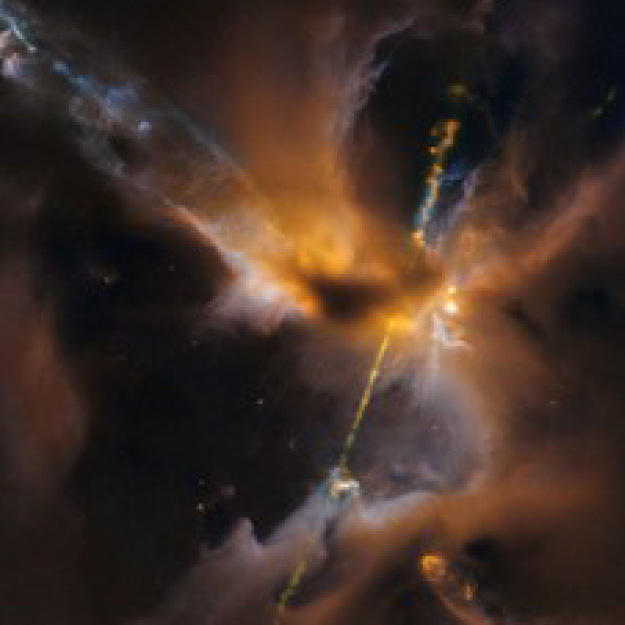Star and Planet Formation
 The formation of stars links galaxies to planets. Within galaxies, gas and tiny grains
of dust collect into massive clouds. Shielded by the dust grains from starlight, the
dark, frigid interiors of these clouds begin to collapse under their own gravity into
hundreds or thousands of individual protostars. Over 500,000 years these protostars
grow in mass, fed by gas from the surrounding cloud. Due to the slight rotation of
the clouds, spinning disks of gas and dust form around the stars. Inside these disks,
planets begin to form. In this way, planets are a byproduct of the star formation
process.
The formation of stars links galaxies to planets. Within galaxies, gas and tiny grains
of dust collect into massive clouds. Shielded by the dust grains from starlight, the
dark, frigid interiors of these clouds begin to collapse under their own gravity into
hundreds or thousands of individual protostars. Over 500,000 years these protostars
grow in mass, fed by gas from the surrounding cloud. Due to the slight rotation of
the clouds, spinning disks of gas and dust form around the stars. Inside these disks,
planets begin to form. In this way, planets are a byproduct of the star formation
process.
At The University of Toledo, we observe star and planet formation in our galaxy with a wide array of telescopes that span the electromagnetic spectrum. A special focus has been on the star forming complex toward the Orion constellation, which contains several thousand young stars and extends over 100 light years. Following a survey of the Orion complex with the Spitzer Space Telescope, we have studied the youngest stars in this complex in the infrared with the Lowell Discovery Telescope (LDT), Herschel Space Observatory, Hubble Space Telescope and Stratospheric Observatory for Infrared Astronomy (or SOFIA, a NASA operated telescope on a 747 that takes observations in the stratosphere), in the X-ray with the XMM-Newton space telescope, and at radio wavelengths with the ALMA and VLA radio telescopes. With the large sample of protostars from these studies, students and faculty at UToledo work to trace the flow of gas from interstellar space onto the growing young stars, to understand how entire clusters of stars form, and to study the formation of disks in which planets will form.
The astronomers at UToledo also strive to understand star formation on galactic scales and in other galaxies. This requires connecting our knowledge of "nearby" star and cluster formation to that in distant galaxies. We also are interested in the formation of brown dwarfs, and whether they form like stars, or in disks of gas and dust surrounding young stars.
Faculty working in Star and Planet Formation include: Prof. Tom Megeath, Prof. Rupali Chandar, Prof. Emeritus Jon Bjorkman and Prof. Michael Cushing.


